Are your baby chicks growing and starting to get restless in their indoor space? They might be ready to explore outside, but are they too young? When is it the right temperature for them? How would you ensure that your chickens are safe? And how do you take them to the outdoors?
When chicks and ducklings have all their feathers and are able to keep themselves warm, they are ready for the outdoors. This typically happens when they are about 3-4 weeks old, but it can vary depending on the type of bird.
Let’s dive further and get to know the ideal conditions for chicks to go outside.
When Can Chicks Go Outside?
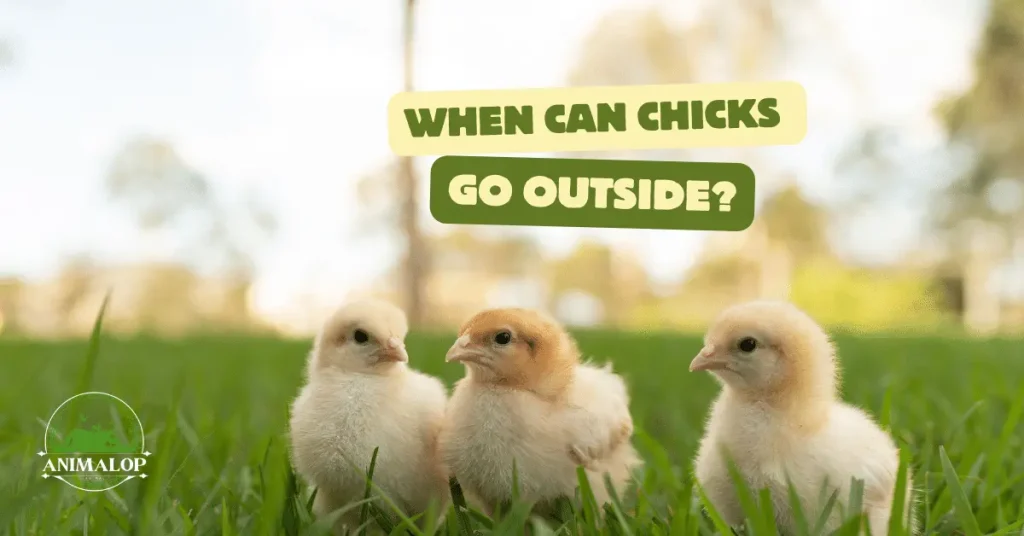
It is easy to remember how cute, fluffy, and soft your chicks were when they hatched or when you first got them. The fuzzy feathers that make a chick look fluffy don’t last forever. Soon, you’ll see your fluffy chicks begin looking a little messy.
This is totally normal and just means their full feathers are growing. Usually, you’ll start to see these new feathers when they’re about 7 to 14 days old. How fast a chick gets its adult feathers can depend on a few things like:
- What kind of chick it is
- What it eats
- How warm it is
- How well it’s looked after
When you start seeing these new feathers among the fluff, it’s time to slowly make their space cooler. Try to lower the heat by 5 degrees each week until the temperature inside is the same as outside. This slow change helps them get ready to live outside.
When your chicks reach the age of 5 weeks, they’re like teenagers. They may look like they have all their grown-up feathers, but they’re not quite ready to be outside on their own. When your “teenage” chicks are 6-8 weeks old, you can start thinking about letting them out of their indoor space for some supervised time outside.
Learn how to prevent sour crop in chickens.
What To Consider When Taking Fluffy Chicks Outside: 6 Factors
Here are some questions you ought to ask yourself to see if your chicks are ready to go outside:
- Do they have all their grown-up feathers?
- Is it warmer than 60℉ outside?
- Will they be in a space that’s completely closed off?
Once your chicks have their full set of adult feathers, they can handle being in weather that’s at least 60℉.
It’s always better to take them out on sunny days, and making sure they stay dry is key to helping them keep warm.
Having a chicken run that’s totally enclosed is really important for their outdoor time, especially if you can’t be out there with them the whole time.
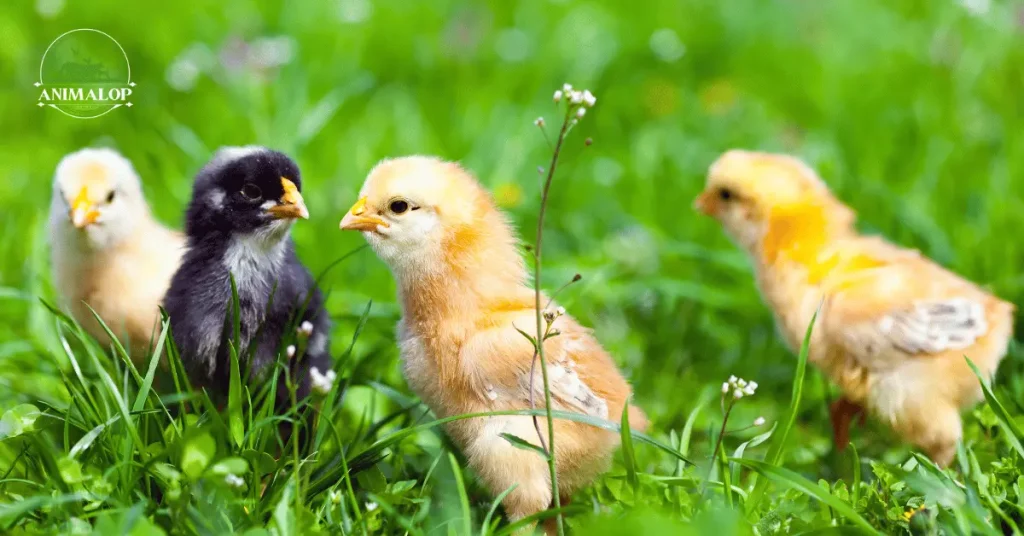
Climate And Temperature
Picking the right time to move your chicks from their warm indoor spot to the coop and outdoor area is important. If your chicks are between 6-8 weeks old, they can handle a bit of cold. If you have a movable chicken coop, you can move it into the sun during the day to help your chicks get used to the natural warmth instead of the heat lamp.
And, if the weather where you live changes a lot and gets cold, you can add extra protection to your coop to make sure your chicks stay warm, especially at night when it’s coldest.
If you’re letting your chicks out in the warmer months, having a coop that’s off the ground can give them more places to hide and stay cool.
Just like grown-up chickens, chicks can get too hot when it’s warm outside. Make sure they have lots of fresh water and put covers over their outdoor area to give them plenty of shade.
Whiting True Blue is one of the hardy chickens which can survive in all types of climates.
Keeping Chicks Safe From Predators
When your chicks start spending a lot of time outside, you can’t always keep an eye on them.
Having a secure coop and a chicken run that keeps predators out is really important, not just for grown chickens but for introducing your little ones to the outdoors too. Predators mostly come out at night, but some will try to grab chicks during the day.
Chicks are especially at risk from predators like snakes and raccoons that can squeeze through small gaps or reach in with their paws. To make their outdoor area safer, cover the lower 4 feet of the chicken run with strong wire mesh (hardware cloth) to stop these predators.
It’s also a good idea to give your chicks places to hide if they feel scared or overwhelmed. Simple things like cardboard boxes turned upside down with holes cut for doors, or homemade hiding spots work well.
And even though your chicks might be too small for chicken perches, you can get adjustable ones. This lets them practice climbing and perching at a height that’s right for them.
Mother Hens and Their Chicks
Some chicks grow up the natural way, right under their moms. Hens can decide to sit on eggs to hatch them at any time, but they usually do this in spring. If your hen wants to hatch eggs in winter, it’s a good idea to gently stop her by taking the eggs away every day.
Chicks born in winter face more challenges than those born when it’s warmer. But, if winters are not too cold where you live, hens can keep their chicks warm even when it’s freezing, though you’ll need to keep an eye on them.
Make sure the chicks don’t get left alone too much when their mom leaves to grab a snack or drink.
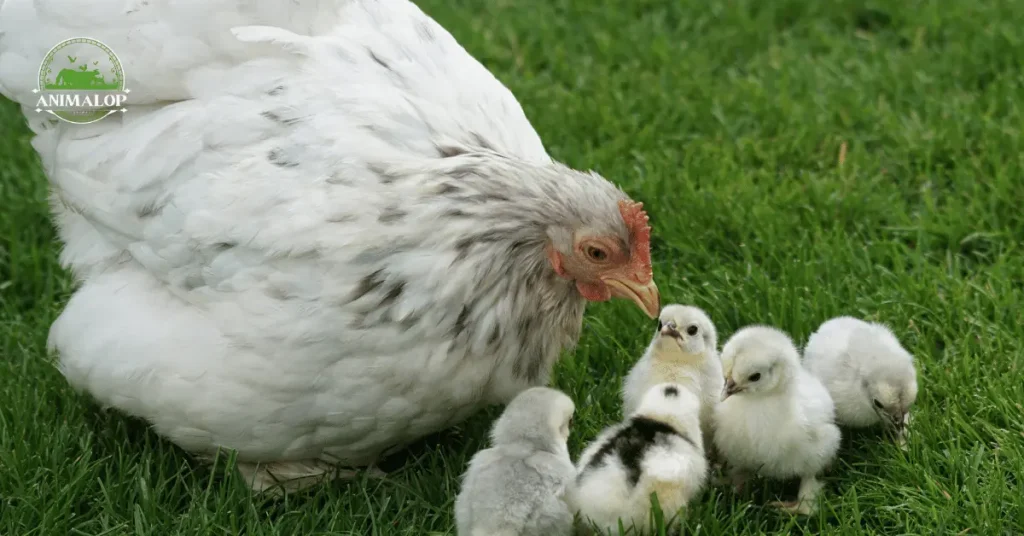
When a hen raises her chicks, she keeps them warm, acting like a cozy, feathery bed. Smart mother hens naturally know how long their chicks can go without warmth and help them get used to the normal temperature around them.
If the hen and her chicks are in a high-up coop, it might be safer to move them to one on the ground so the chicks don’t risk falling out trying to follow their mom. Or, you can take the chicks from the hen after they’re dry from hatching and put them in a warm spot indoors.
Taking Baby Chicks Outside for the Day
If you’ve been slowly making the brooder cooler, your chicks should be okay outside when it’s as cool as 60℉, especially when they’re 6-8 weeks old.
For a good time outside with your Sapphire Splash chicks, pick days that are sunny and not too cold. Begin with short trips to where your chickens hang out and let them explore and peck around.
Each chick is different, but don’t be surprised if they seem a bit unsure at first. Walking on grass is a new feeling for them, very different from the straw, wood shavings, or whatever else they have in their brooder.
Being outside is a whole new world for chicks raised inside, with lots of new things to see, hear, and smell. Start with short trips to keep from overwhelming them to help them get braver. Make sure you’re there with them during these first few times to watch how they handle all the new experiences.
After a few days of these short trips, you can let them stay out a bit longer, adding 10-15 minutes every few days, but always think about the weather.
Soon, your chicks will be spending lots of time during the day getting used to where they’ll live permanently. If you haven’t started yet, now’s a great time to have them spend their outside time in their coop and run.
Moving Your Chicks Outside Permanently
Your chicks are all grown up with their feathers, have had some successful outdoor adventures, and are doing great. Now it’s time to move them outside for good! Before you do, check that you have:
- A safe coop where your chicks feel at ease going in and out
- A chicken run attached to the coop that’s extra secure against predators
- Feed and water containers set up so your chicks can easily reach them
- Outside temperatures staying above 60℉, even at night
- Your chicks are between 6-8 weeks old at least
- If you’re moving your chicks into an Eglu chicken coop, wait until they’re 12 weeks old. This will provide them with enough time for growing big enough for the coop’s design. Eglu coops have features like roosting bars and ladders that might be hard for chicks younger than 12 weeks, and the spacing of the run’s wire is meant for bigger chicks.
Winter Conditions For Chicks
Most people who raise chickens think spring and the start of summer are the best times to move chicks outside. But, in places where it’s really cold for a lot of the year, raising chicks in spring can be tough.
In those cases, it’s better to keep your chicks inside as long as you can, ideally until they’re 12-16 weeks old. If your chicks get too big for their indoor space before then, make sure you protect them from the cold.
Get your chicks’ coop and run ready for winter just like you would for grown-up chickens, and trust that your Eglu coop will keep them warm. Extra insulation to the coop is beneficial for more warmth.
Is It Too Cold for My Chicks?
Watch your chicks closely to see if they’re too cold. Look for signs like:
- Not moving much
- Clumping together
- Lifting one foot off the ground
- Changes in color on their heads or feet
If you see any of these signs when it’s cold, bring them inside right away. Warm them up slowly to avoid shock. Use a heat lamp only if they’re in a place with drafts, like a garage. Keeping them in a room warmer than 65℉ should help them warm up slowly.
Wait until they’re back to eating and drinking normally before letting them outside again, and only when it’s not so cold.
Can Chicks Hang Out with Other Hens?
If you’re planning to mix your chicks with older hens, you’ll want to do it carefully, just like when you’re bringing new chickens into your group. You don’t need to keep chicks you raised yourself away from the others for health reasons, because you’d notice if they were sick.
But, you should still take it slow when introducing them to the rest of the chickens to avoid any fights. Putting a small chicken pen inside or close to where your other chickens are can let your chicks meet them safely.
Remember, chickens always figure out their own pecking order, no matter if they’ve seen each other before or not.
Watch closely the first time they meet to make sure no chick is getting bullied. If any chick is getting picked on, or if any hen is too rough, you might need to keep them apart until the chicks are bigger.
When Not to Take Chicks Outside
Don’t move your chicks outside if:
- They’re younger than 6 weeks
- It’s freezing out and they’re younger than 12 weeks
- It’s raining hard or the weather is extreme
- They can’t get into their coop easily
Always look at the weather forecast before planning to move your chicks outside for good. If it’s going to rain a lot or there’s bad weather coming, wait until it gets better. Chicks, like grown chickens, struggle to keep warm when they’re wet.
Some chicks figure out how to use a coop ladder fast, but others might need help. If your chicks are struggling, put a ramp over the ladder steps until they get better at climbing. Once they’re good at it, you can take the ramp away.
Also, be mindful of bird flu in your area. Chicks can catch it just like adult chickens. Using tarps that don’t let water through over your chicken run can help keep wild bird droppings out, lowering the chance of your chicks getting sick.
FAQs
Final Thoughts
Getting your chicks ready for the great outdoors is all about timing and safety. Make sure they’re old enough, fully feathered, and used to cooler temperatures before you start.
Keep their outdoor trips short at first and always in a safe, enclosed space to protect them from predators and the elements. With a bit of care and attention, your chicks will soon be ready to enjoy their new outdoor home, growing up healthy and strong.

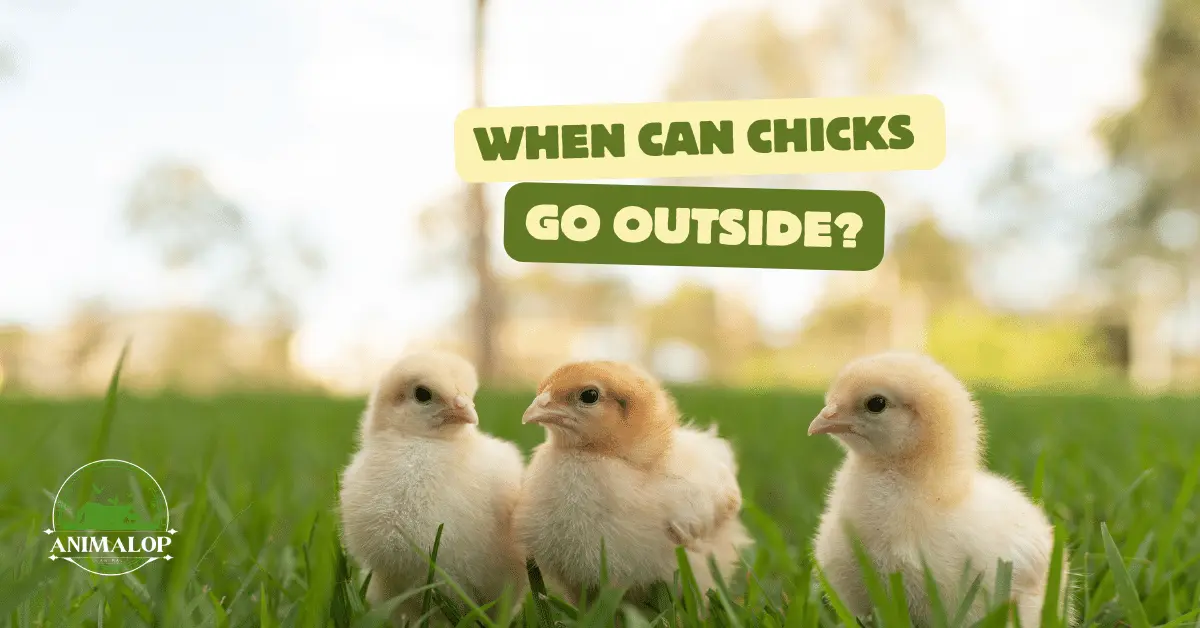
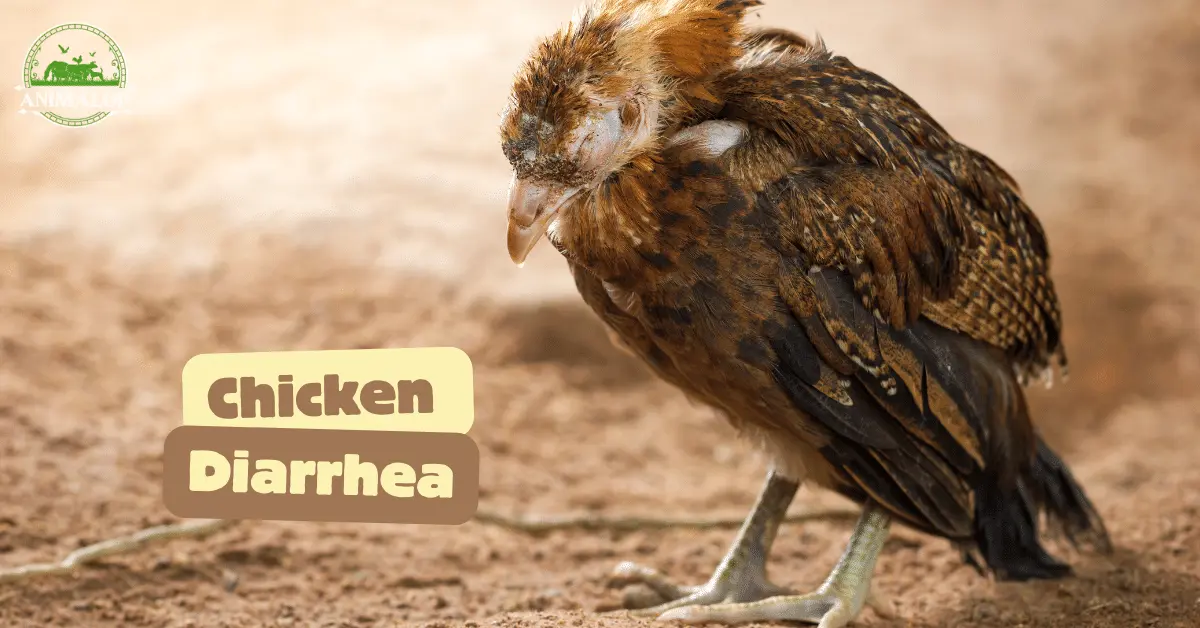
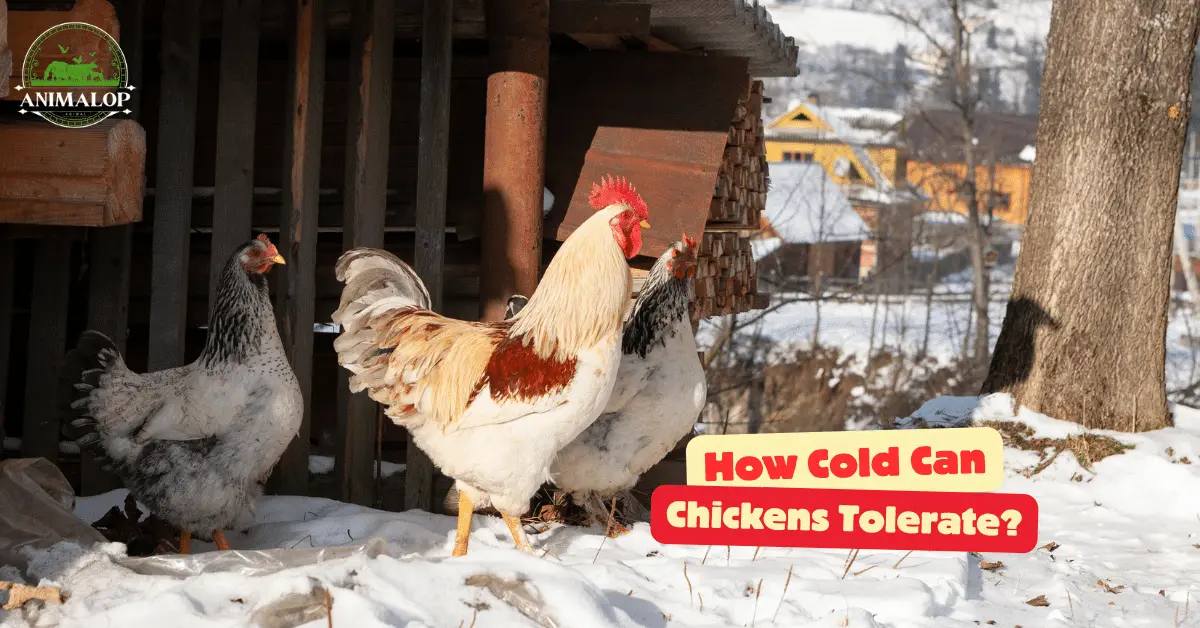
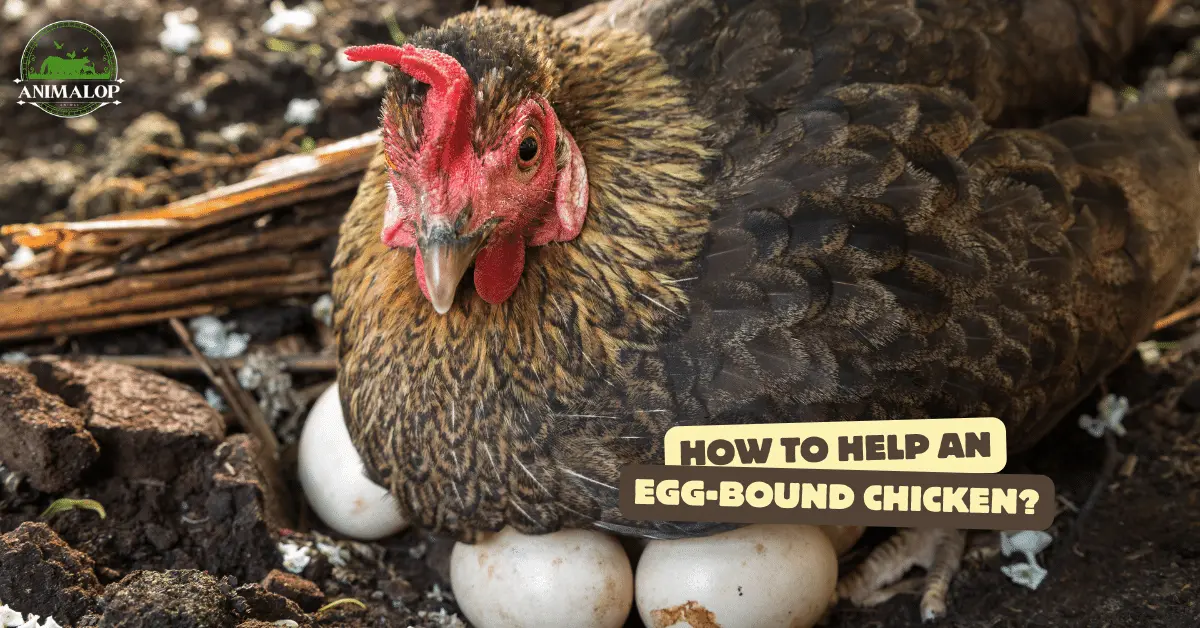
5 Comments on “When Can Chicks Go Outside? 6 Factors To Consider”